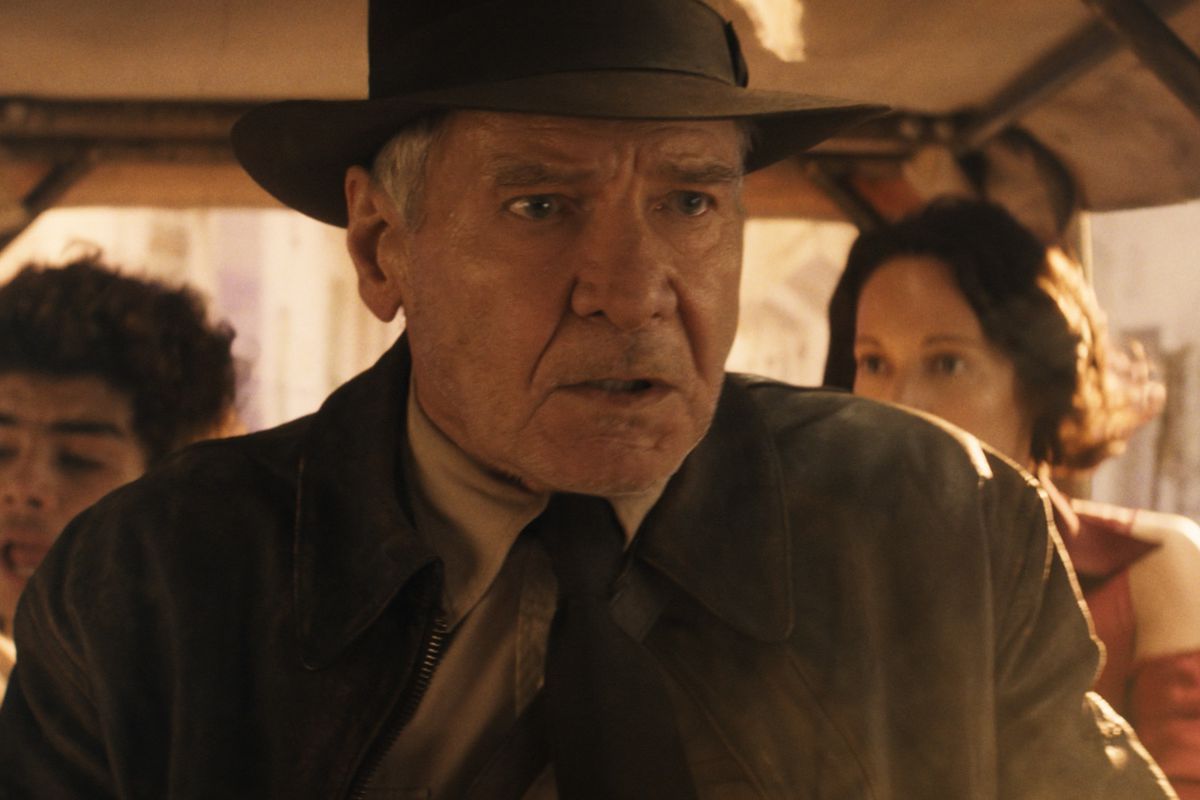When Indiana Jones walked down the aisle with Marion at the close of Kingdom of the Crystal Skull, for better or worse, it was seen as the end. Writing issues and bad CGI aside, Harrison Ford had returned to give a latter-day swansong to the beloved adventurer. Showing us all that Indy was still able to swing a punch, save the world from fascists, and despite it being quite poorly received, it was generally considered to be an acceptable, if unnecessary, end to things.
It’s maybe not surprising that in this current age of franchise reboots, legacy sequels and passing-of-the-torch stories all round, that Disney would drag out Ford to milk every penny from this last monetisable legacy of their Lucasfilm purchases. It’s perhaps even less surprising that the unfortunately monikered Indiana Jones and the Dial of Destiny feels every bit the ungainly, tonally discordant, and largely incoherent mess that has come to be the norm for anything leaving the Disney stable recently.
The film finds the now pensionable-aged Jones, on the day of his retirement from a lecturing job at a far less prestigious college than in previous films. He’s still shockingly fit and able-bodied for a man pushing 80, but he’s also divorced, borderline alcoholic, and seemingly unable to take any joy in the moon landing celebrations going on around him. Then into his life appears enthusiastic young wannabe archaeologist Helena Shaw (Phoebe Waller-Bridge) who has designs on reuniting the two halves of the Antikythera, a dial-like device Indy and her father (Toby Jones) found part of during WW2.
At the same time, ex-Nazi turned Space-race scientist Voller (Mads Mikkelsen), his CIA handlers, and his suspiciously Germanic mercenary cohorts are also looking for the device; leading to a globe-trotting chase to find the other half amidst shootouts, street chases, caves, crypts, and all the usual fun of the franchise.
Unfortunately, the end result just isn’t all that good. While the opening 20 minutes of the film, throwing us back to the Second World War with a digitally de-aged Indy punching and shooting Nazis while clambering across a train, isn’t bad. But while the CGI work is probably the best ever seen on screen, it’s still far from perfect and makes for a dissonant and uncanny experience, rather like watching a character from a video game cutscene inserted into real footage.
But after that, the rest of the film swings wildly in tone, and while an octogenarian Ford does acquit himself decently all things considered, it’s hard to take it seriously when the film has him feeble and tired one minute, then heroically and repeatedly punching out Boyd Holbrook at various points throughout the runtime. There’s also an over-reliance on greenscreen work, which makes a Tuk-Tuk chase through the streets of Tangier look ridiculous, as the actors bicker at each other while the fake background whizzes by.
Another misstep is the characterisation of Helena, as the film fails repeatedly to make her character endearing, while also having her outshine Indy in every way in almost every single situation. It’s a clear choice which presumably comes from a version of the script that was setting her up as the heir apparent to the Jones franchise. But the meandering and often confused storyline smacks of a movie that’s been rewritten, reshaped and reshot, multiple times during production.
It’s certainly not a complete disaster, as some scenes do feel encouragingly fun, and there are hints of the old magic. One would expect as much from Mangold, with his pedigree of films dealing with the idea of a past-their-prime protagonist; Le Mans ’66, Copland, and Logan all spring eagerly to mind. Clearly he can only do so much with the ever-changing demands of the studios. The end result is just a mess of a film that while not quite as clunky as Crystal Skull, is a poor finale for a much-,oved character who should have been allowed to rest a long time ago.
In cinemas nationwide now


Comments